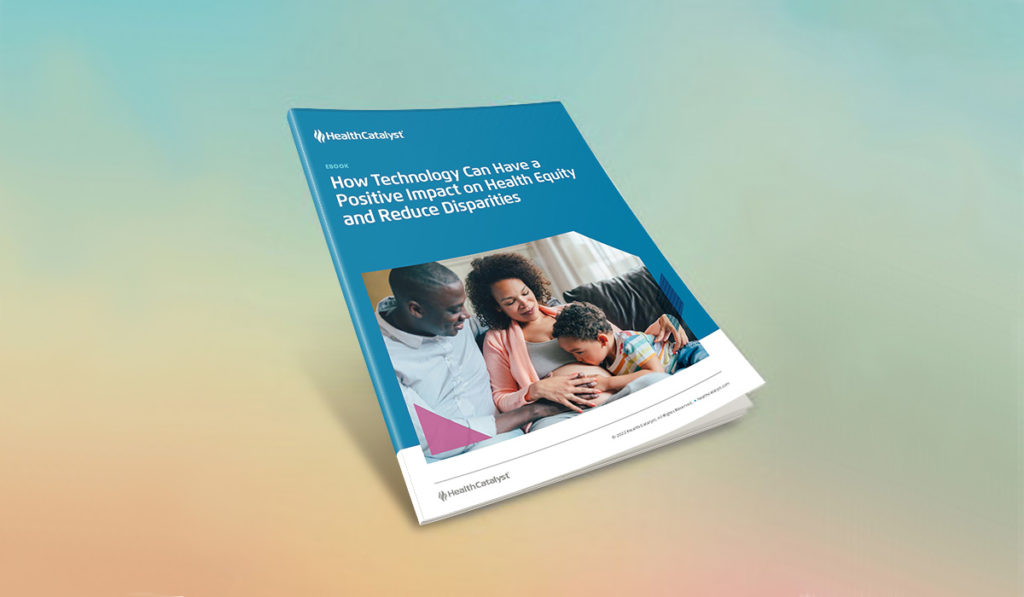Chronic conditions across the United States are prevalent and continue to rise. Managing one or more chronic diseases can be very challenging for patients who may be overwhelmed or confused about their care plan and may not have access to the resources they need. At the same time, care teams are overburdened, making it difficult to provide the support these patients require to stay as healthy as possible. A new approach to chronic condition management leverages technology to enable organizations to scale high-quality care, identify gaps in care, provide personalized support, and monitor patients on an ongoing basis. Such streamlined management will result in better outcomes, reduced costs, and more satisfied patients.
 Download
Download

According to the CDC, 6 in 10 adults in the United States have a chronic condition and 4 in 10 adults have two or more. As that number continues to grow across the United States, it is creating significant challenges for both patients and their healthcare providers. On average, 1 in 20 people qualify as high-risk for poor health and high service usage due to the complexity of their health conditions and co-morbidities. This increases the overall cost to healthcare systems, adds strain to already overburdened care teams, and negatively impacts the quality of life for millions of people.
As the prevalence of chronic diseases persists, it’s clear the traditional self-management approach to chronic care management isn’t effective. Healthcare needs a new digital strategy to lower barriers to care, identify gaps in care, slow disease progression, and provide the added support that patients need—not just during infrequent clinic visits, but as they live their everyday lives.
Relying only on a manual chronic care management approach presents significant challenges for healthcare providers who have limited time and resources. Adding automated, digital solutions to identify patients who need added support and deliver care beyond the clinic can help patients keep track of their care plan, reduce the burden on the care team, improve chronic care management efforts, and help organizations succeed in value-based care.
This technology-driven approach can support a more sustainable and effective solution for several reasons:
1. Scalability: Dedicating a member of the care team to regularly monitor patients with chronic conditions and identify those who may be at risk for developing one isn’t feasible. However, with digital communication pathways, care teams can monitor, educate, and coach patients to keep them on track with their care plan without adding to care team workload. This type of automated and optimized patient engagement can improve outcomes across a range of chronic conditions, including hypertension, diabetes, and congestive heart failure via simple text-based communication.
2. Identifying care gaps: A technology-based solution can help bridge gaps in care that may lead to disease progression or other poor outcomes. Identifying gaps, like missed routine screenings and health data related to chronic conditions, or risk of chronic conditions is essential to keep patients as healthy as possible. Using information integrated with the EHR, providers can streamline pre-visit planning and close gaps at the point of care where it’s most impactful. Patients receive more complete care and benefit from more efficient, well-planned visits.
3. Personalized patient communication: A care plan to manage a chronic condition can be confusing for patients. If they are living with more than one chronic condition, keeping track of medications and lifestyle modifications can be overwhelming, especially if they face challenges like poor health literacy or language barriers. If patients do not understand their care plan or can’t follow it for any reason, they have a high risk of noncompliance and worsening health. Simple, text-based communication pathways can engage patients at every step. Using easy-to-understand language, and prompts, patients can automatically report issues and/or barriers so that the care teams are alerted when intervention is needed. When patients can engage on their own terms and revisit resources and information whenever they want, they are empowered for success.
4. Remote patient monitoring: Healthcare tends to be episodic, so in-person visits can be separated by weeks, months, or even longer. In addition, interactions with healthcare providers are also becoming shorter, which makes it challenging to accurately diagnose a condition, adjust treatments, or address barriers patients face in their day-to-day lives. Remote patient monitoring is a valuable tool that improves connectivity between patients and care teams and provides more comprehensive oversight of the patient’s health and lifestyle habits. As chronic diseases become more widespread, resources more strained, and social determinants of health continue to negatively impact some populations, it’s more important to stay closely connected to patients between visits and deliver proactive chronic care management.

Learn about the five key advantages of leveraging patient engagement technology to optimize and streamline chronic condition management.
Patients with chronic conditions may have different physical needs and comfort levels that make it difficult for them to follow their care plan and manage their health. Digital technology can give patients an easier way to access care and stay engaged, help care teams identify gaps in care, and enable healthcare organizations to deliver very high-quality care to every patient.
Interested in learning more? Download a case study, “Controlling Blood Pressure with Remote Physiologic Monitoring.”
Would you like to learn more about this topic? Here are some articles we suggest:
Would you like to use or share these concepts? Download this presentation highlighting the key main points.